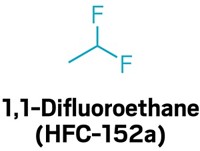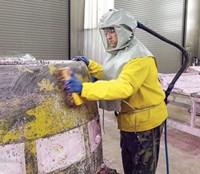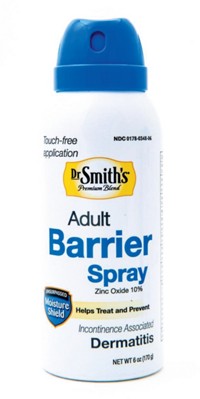Advertisement
Grab your lab coat. Let's get started
Welcome!
Welcome!
Create an account below to get 6 C&EN articles per month, receive newsletters and more - all free.
It seems this is your first time logging in online. Please enter the following information to continue.
As an ACS member you automatically get access to this site. All we need is few more details to create your reading experience.
Not you? Sign in with a different account.
Not you? Sign in with a different account.
ERROR 1
ERROR 1
ERROR 2
ERROR 2
ERROR 2
ERROR 2
ERROR 2
Password and Confirm password must match.
If you have an ACS member number, please enter it here so we can link this account to your membership. (optional)
ERROR 2
ACS values your privacy. By submitting your information, you are gaining access to C&EN and subscribing to our weekly newsletter. We use the information you provide to make your reading experience better, and we will never sell your data to third party members.
Business
Solvents Take 'aim'
Regulations are still a key driver for this sometimes embattled industry
by Alexander H. Tullo
October 18, 2004
| A version of this story appeared in
Volume 82, Issue 42

Over the past decade, the greatest driver of technological change in paints and coatings has been the reduction of traditional solvent use. Regulations designed to reduce air pollution have forced paint makers and their raw materials suppliers to develop high-solids, waterborne, powder, and other technologies that have revolutionized the industry.
Most of the regulations aim to reduce the use of the volatile organic compounds (VOCs) that, along with nitrogen oxides, produce ozone. But one of their effects has been to send solvent suppliers and their customers scrambling to develop compliant coatings with lower volumes of solvents.
"VOC emissions and their contribution to ground-level ozone is a major issue that has preoccupied the industry for many years and will continue to preoccupy the industry for years to come," says Nigel J. Sarginson, global product stewardship and regulatory affairs manager for ExxonMobil Chemical's basic chemicals and intermediates business.
One of the most important regulations has been the Environmental Protection Agency's national rule for architecture and industrial maintenance (AIM) coatings, adopted in the 1990s. These regulations put nationwide limits on the amount of VOCs that can be used in products such as house paints and varnishes. But because of local air pollution problems, even stricter limits were put in place in Southern California in the late 1990s and applied broadly throughout that state in 2000.
The latest shoe to drop is a series of California-like AIM regulations being implemented in New York, New Jersey, Pennsylvania, Delaware, Maryland, the District of Columbia, and northern Virginia on Jan. 1, 2005. These regulations call for VOC content as low as 100 g per L for flat paints and 250 g per L for high-gloss paints. EPA regulations call for 250 g per L for flat paints and 380 g per L for nonflat coatings.
Bob Nelson, senior director for environmental affairs at the National Paint & Coatings Association, says the new VOC rules will dramatically alter the types of formulations available in those jurisdictions, as they have for California. Coatings that use solvent-based resins, for example, will be replaced by waterborne acrylic-based paints. "Alkyd house paint as you know it will not be around," Nelson says.
Pat Gottschalk, business director for solvents and intermediates at Dow Chemical, agrees, based on his experience working with customers to either switch from solvent-based to waterborne paints or reduce the VOC content of waterborne paints. "You are always working around existing products," he says. "But after a while, unless you switch technologies, you will begin to trade quality and performance for compliance."
THE NATIONAL AIM rules were adopted a decade ago largely because the many local rules being promulgated at the time were forcing paint companies to come up with different formulations for different jurisdictions.
With the pending mid-Atlantic states rules, Nelson says, the problem is again becoming widespread. "About 35% of the population of the U.S. will now be covered by a rule other than the national one," he says.
Furthermore, six New England states are also considering regulations similar to California's that could take effect in 2006. Southern California, meanwhile, has enacted regulations that bring solvent levels for architectural paints down to 50 and 100 g per L.
And with more stringent ozone regulations being adopted by EPA, even more states will look to paint makers to reduce VOCs. "One scenario is that by 2008 you can have two-thirds of the country covered by a rule similar to the statewide California rule," Nelson says.
Paint market maturity, VOC regulations, and solvent-free technologies such as powder coatings have combined to dampen the outlook for the solvents business. ExxonMobil's Sarginson says U.S. market volume is 2.7 billion lb per year, of which 60% is hydrocarbon solvents and 40% oxygenated solvents. The industry is currently seeing no growth, and he predicts a slow market decline in 2006 because of the new rules.
But amid the general decline, there will be winners and losers. Hydrocarbon solvents have been mostly declining in recent years, while oxygenated solvents have been growing slightly, observers say.
Dow's solvent business is predominantly based on oxygenated solvents such as glycol ethers. Martin Sutcliffe, the firm's business director for glycol ethers, says his products are generally environmentally favorable. Even though they are VOCs, they help enable high-solids coatings. "The high solvency of glycol ethers is one of the ways you can reduce the VOC level," he says.
Murray Deal, general manager for coatings at Eastman Chemical, says his company has experience in high-solids coatings and is therefore seeing the same trend. "As you move toward high-solids coatings, the need for high-performance solvents grows, and so solvents like methyl amyl ketone, methyl propyl ketone, and methyl isoamyl ketone show more growth," he says.
TO RESPOND TO some of the newer regulations, Eastman is introducing a new line of coalescing aids for architectural coatings later this month. The line includes its texanol ester alcohol and several other coalescents.
Invista, formerly DuPont's fibers business and now part of Koch Industries, is also a participant in the compliant-solvents market through its dibasic esters (DBE), which are coproducts of adipic acid production. According to Melinda Burn, DBE products and market manager, DBEs are considered low-vapor-pressure solvents for consumer and institutional applications but not for architectural paints.
But to Burn, the new regulations still present an opportunity because of their high solvency. She says DBEs substitute for methyl ethyl ketone (MEK) and glycol ethers as well as other solvents.
In addition to helping paint companies come up with new formulations, the solvents industry is working on ways to increase its options by making the regulations themselves more flexible. For example, EPA's Reactivity Research Working Group--which consists of atmospheric scientists, state and federal officials, and representatives from industry--is considering regulating VOCs not by mere volume but by their propensity to react and create ozone in the atmosphere.
According to ExxonMobil's Sarginson, solvents with low reactivity, such as isoparaffins, esters, and ketones, can be substituted for solvents with high reactivity, such as aromatics and some glycol ethers. "That enables you to reduce the creation of ozone and still use solvent-based technologies," he says. "That is a win-win for consumers, customers, and also for the environment." The method is being implemented for aerosol coatings in California, and Sarginson hopes it will be adopted nationally.
Another front is the removal of various solvents from EPA's list of 189 hazardous air pollutants (HAPs), which can be used in only limited amounts in industrial coatings applications.
Industry observers are expecting EPA to delist ethylene glycol butyl ether soon. To delist a substance from the HAPs list, EPA reviews the toxicity of the solvents. EGBE is known for its high solvency and low price, and Dow's Gottschalk calls its listing as a HAP "the only black eye for a product that is so good from a price-performance standpoint." EPA is also considering delisting MEK and methyl isobutyl ketone.
Even if regulations ease a little, the trend of lower and lower solvents content in coatings is expected to march on. A few advantaged solvents may eke out market share gains, but, overall, the industry will see little growth in the future.





Join the conversation
Contact the reporter
Submit a Letter to the Editor for publication
Engage with us on Twitter